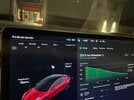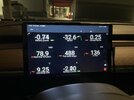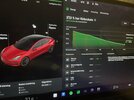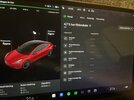Thanks to everyone who replied,
@cwerdna ,
@AAKEE , and
@Regaj!
Anyhow, in conclusion, I was trying to understand what was actionable for us owners. What would be best practices? Is there anything we can do besides pre-conditioning?
Aakee thinks Tesla's BMS is going to heat the battery and mitigate the worst possibilities, and according to the UAF article, the worst possibilities, dendritic growth is an extreme result, "In extreme cases, lithium plating can take the form of dendrites" I would hope Tesla's BMS can prevent that, right? But preventing the source of dendritic growth, ie permanent lithium plating, would seem to be a good approach.
So, will Tesla's BMS protect us against permanent plating or is there something we need to do and when do we need to do it?
Regaj was kind enough to pull from the UAF article what seems as actionable:
● Under 10°C (50°F): Lithium plating and permanent degradation can occur with fast charging below this temperature.
● Under 0°C (32°F): This is the recommended lowest temperature for normal use of standard Li-ion batteries. Below this temperature, anything faster than Level 1 charging may cause lithium plating degradation.
● Under -20°C (-4°F): In addition to significantly reduced charging and discharging power capabilities, the recommended storage range (no active charge or discharge) is generally down to about -20°C (-4°F) for standard Li ion batteries used in EVs. The battery may not survive prolonged temperatures below this threshold.
I'm assuming the temps are Pack temps, not ambient temps, so without that info, we're still wondering what to do.
Since, as Regaj notes, it would be a great "feature" if Tesla gave us the average pack temp, what does the BMS do under cold conditions? When it's cold and the car is plugged in, how warm does that keep the pack? Presumably above 32F so I can use my L2 charger? I did look at SMT once, and noted that it showed my battery cells at 42F, but that was just on my routine commute. I wasn't supercharging. Having said that, I've driven off to go skiing, and not pre-conditioned or anything, and supercharged, rather slowly. In hindsight that sounds like a bad approach.
Thanks to the chart aakee posted, we need a temp of 25C or about 77F for the pack to charge at 1C rates, which seems to be about 80kW for a normal sized Model 3 battery. Shouldn't the Tesla BMS be managing this? Since we can't control supercharging rates, and as Regaj notes, Tesla's interest is in supercharger efficiency in getting cars in and out, what can we do, other than be sure to pre-condition on our way to the charger? Should we be trying to charge at higher SOCs, ie above 50% SOC, so that we are lower on the charge curve, ie charging at a slower rate, below 1C?
Anyway, lots of food for thought, and I think I'll change some of my charge habits when I go skiing and have to supercharge on the way!







